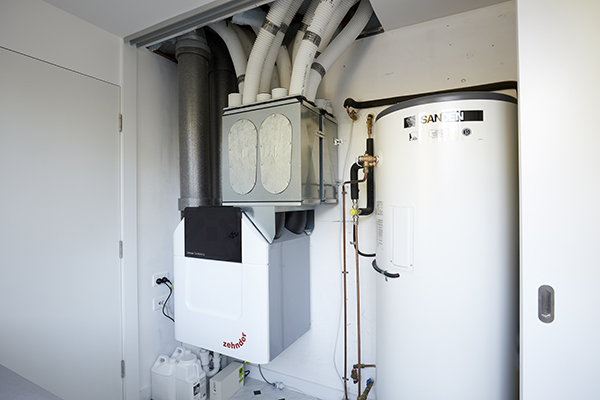Discovering the Perks of Heat Recovery Ventilation for Power Effectiveness in Houses
Heat Recovery Ventilation (HRV) systems provide home owners a sensible strategy to boosting energy efficiency. By reclaiming heat from outward bound air, these systems can significantly decrease heating and cooling prices. Furthermore, they offer a steady supply of fresh air, boosting indoor air quality and convenience degrees. As property owners take into consideration lasting alternatives, understanding the nuances of HRV systems comes to be progressively essential. What aspects should one review before making such a financial investment?
Comprehending Heat Recovery Ventilation Systems

Exactly How HRV Improves Indoor Air Quality

Energy Savings: The Monetary Benefits of HRV
Taking full advantage of energy efficiency, heat recovery ventilation (HRV) systems provide significant monetary benefits for house owners. By recovering and reusing warmth from exhaust air, HRVs substantially lower heating & cooling expenses. This modern technology can result in power financial savings of as much as from this source 30%, depending upon environment and use patterns. Home owners frequently notice decreased energy expenses soon after installation, making HRVs an economically smart financial investment in time. In addition, numerous regions give incentives or discounts for energy-efficient upgrades, even more boosting the financial allure. As power rates remain to increase, the cost-effectiveness of HRVs becomes significantly clear. Generally, the incorporation of HRV systems not just promotes energy effectiveness however additionally contributes to long-term economic cost savings for households.
The Environmental Influence of Heat Recovery Ventilation
A substantial ecological benefit of heat recovery ventilation (HRV) systems exists in their capacity to lower total power usage. By reclaiming warmth from exhaust air and transferring it to incoming fresh air, HRV systems lessen the requirement for energy-intensive heating and cooling down methods. This reduction in energy demand adds to lower greenhouse gas exhausts, as much less fossil gas is needed to preserve comfortable interior temperature levels. Additionally, HRV systems boost indoor air quality by successfully trading stale air with fresh outside air, decreasing dependence on mechanical air conditioning systems that can harm the atmosphere. Generally, the execution of HRV systems supports lasting living methods like it and lines up with global efforts to deal with climate change by promoting energy efficiency in domestic settings.
Choosing the Right HRV System for Your Home
Just how can home owners assure they choose the ideal heat recovery ventilation (HRV) system for their requirements? First, they should examine their home's size and design, as these factors affect airflow demands. Next off, assessing the system's performance rankings is vital, as higher ratings indicate far better efficiency and energy savings. Property owners need to additionally take into consideration installment and upkeep prices, contrasting various brand names and designs for worth. Additionally, it is necessary to assess sound levels, as some systems run more quietly than others. Consulting with cooling and heating experts can offer tailored referrals based upon particular home problems. Analyzing individual reviews and service warranties can assist in making an educated decision, making sure that the chosen HRV system effectively boosts interior air quality and energy efficiency.
Often Asked Questions

Exactly how Often Should I Tidy or Maintain My HRV System?
The regularity of cleansing or keeping a heat healing air flow (HRV) system generally depends on usage and ecological factors. Generally, it is a good idea to perform upkeep every 6 months to ensure peak efficiency and air high quality.

Can HRV Equipments Aid Decrease Humidity Levels Indoors?
HRV systems can effectively minimize interior humidity degrees by exchanging stagnant, damp air with fresh, drier air from More Help outside. HRV Heat Recovery Ventilation. This process assists maintain a balanced interior environment, boosting convenience and avoiding moisture-related concerns
What Is the Life expectancy of a Common HRV System?
The lifespan of a typical heat recovery ventilation (HRV) system differs, normally lasting in between 10 to 15 years. Routine maintenance can expand its effectiveness and functional life, guaranteeing peak performance throughout its usage duration.
Are There Any Sound Problems With HRV Equipments?
Noise worry about HRV systems can develop, particularly from follower operation. Nonetheless, lots of contemporary systems are made to minimize audio levels, guaranteeing they run quietly while maintaining efficiency, which addresses possible disturbances in living atmospheres.
Can I Set Up an HRV System Myself, or Do I Required a Specialist?
The specific contemplated whether to mount the heat recovery ventilation (HRV) system directly or work with an expert. Typically, while do it yourself setup is possible, proficiency warranties appropriate functionality and compliance with regional building regulations, enhancing system performance.